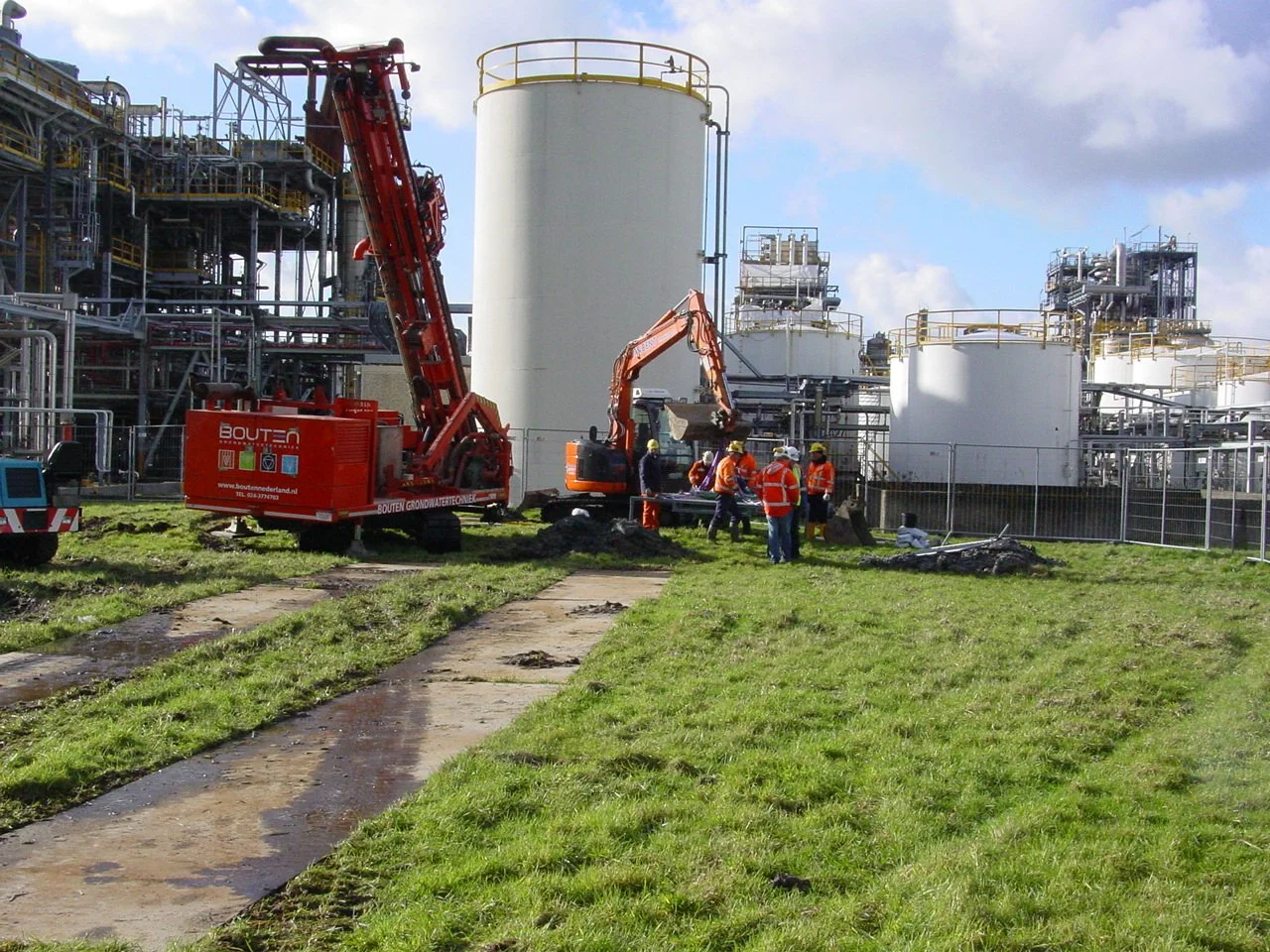The Netherlands
1,4-Dioxane
Multiple Water Bearing Zones
〰️
Managing Phytotoxic Levels
〰️
Multiple Water Bearing Zones 〰️ Managing Phytotoxic Levels 〰️
Achievements:
Overall healthy trees despite phytotoxic concentrations
High mass uptake (50-100 kg/y)
Evapotranspiration <0.10% of mass entering system in GW
1,4-Dioxane biodegradation
Phyto was a cost effective, sustainable, nature-based alternative for providing hydraulic control
Project Objective and Background:
The groundwater contamination with 1,4-dioxane (dioxane) at the former dioxane production plant, is being contained via a phyto-containment approach with 239 poplars in TreeWell® units. The principle of this approach is that the trees take up sufficient (dioxane-contaminated) groundwater to realize a hydraulic containment, thereby limiting and ultimately preventing further off-site migration of dioxane.
The plume was upto 1,500 mg/L and in two separate zones (Layer A: 4-6 mbgs, Layer B: 7-10 mbgs).
Implementation:
This TreeWell System installation intially took place in March 2013 and included 239 Straw TreeWell Units (Layer A - 185 units and Layer B - 54 units) and was designed to account for groundwater flow across the planting area. A Straw TreeWell Unit, which is a closed-bottom version of a standard TreeWell unit, can be employed to address contaminated groundwater at extreme depths or to address specific contaminated water-bearing zones.
Results: Phytoremediation System Performance Summary (5-Year Review)
Overall healthy trees despite phytotoxic concentrations
Tree health and growth remained consistently satisfactory over five years. Most trees were in fair or better condition, with the healthiest found in the southwestern area—possibly due to elevated polyol concentrations. Poorer-performing trees appeared randomly distributed.
High mass uptake (50–100 kg/year)
Trees consistently took up significant amounts of dioxane, estimated at 50–100 kg per year through groundwater extraction.
Evapotranspiration <0.10% of mass entering system in GW
Dioxane volatilization was minimal. In 2019, only 0.03% of the estimated uptake was released via evapotranspiration, consistent with 2018 and lower than in earlier years.
1,4-Dioxane biodegradation
Microbiological evidence and lab studies confirmed dioxane biodegradation in the tree root zones, explaining the low volatilization rates.
Phyto was a cost-effective, sustainable, nature-based alternative for providing hydraulic control
The system effectively contained contaminant migration while avoiding the high costs and inefficiencies of pump-and-treat approaches.





